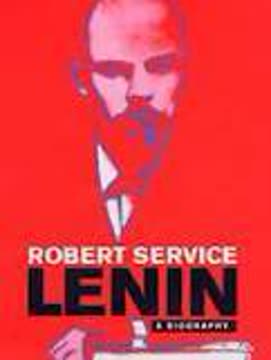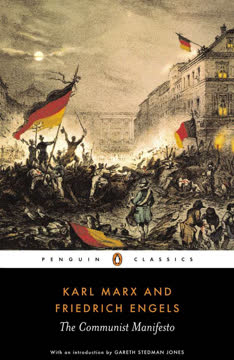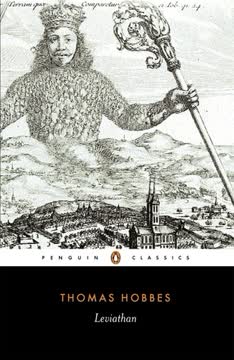Key Takeaways
1. Formative Years Shaped by Family, Education, and Tragedy
Lenin was one of those many intellectuals demanding Revolution.
Diverse origins. Born Vladimir Ulyanov in Simbirsk, his family background was a mix of Russian, German, Swedish, and possibly Jewish and Tatar heritage. His parents, Ilya and Maria Ulyanov, were upwardly mobile, educated individuals who instilled in their children a deep commitment to learning and progress, aspiring to integrate into Imperial society. They valued Enlightenment ideals and a "European" Russia, distancing themselves from traditional "Old" Russia.
Academic pressure. The Ulyanov household was one of intense expectation, particularly regarding academic achievement. Both parents pushed their children hard, sometimes causing stress and anxiety, as seen in his sister Anna's struggles. Vladimir, however, excelled, becoming the top student in his class at the Simbirsk Classical Gimnazia, known for his sharp intellect and diligence, though also for being somewhat reclusive.
Profound impact. The sudden death of his father in 1886 and, even more significantly, the execution of his beloved elder brother Alexander for revolutionary activity in 1887 shattered the family's hopes for conventional success and exposed them to social ostracism. This trauma, coupled with his rigorous but narrow classical education and exposure to radical ideas through his brother, profoundly shaped young Vladimir, hardening his resolve and turning his intellectual prowess towards revolutionary aims.
2. A Personality Forged in Intensity and Lacking Sentimentality
Lenin had greater passion for destruction than love for the proletariat.
Early traits. From childhood, Vladimir was noted for being energetic, brilliant, and charming, but also boisterous, demanding, and sometimes malicious towards his siblings. While capable of self-control and outwardly calm, especially after trauma, he possessed a volatile, choleric temperament and a deep-seated inner rage that often manifested as controlled aggression.
Emotional austerity. The Ulyanov family was emotionally undemonstrative, a trait Vladimir inherited and amplified. He suppressed outward displays of feeling, even in the face of personal tragedy, preferring to channel his intensity into work and political struggle. This lack of overt sentimentality extended to his political views, where he dismissed concepts like compassion and charity as irrelevant to the cause of revolution.
Complex relationships. While capable of inspiring loyalty and relying heavily on the support of women in his life—his mother, sisters, and wife—he also manipulated them and could be surprisingly insensitive to their emotional needs. His personal relationships, including his marriage, were often secondary to his political commitments, revealing a personality singularly focused on his revolutionary goals.
3. Intellectual Development Driven by Selective Reading and Revolutionary Zeal
Chernyshevski had 'ploughed him over and over again'.
Beyond the curriculum. While excelling in the classical curriculum of the gimnazia, which emphasized rigorous linguistic analysis but avoided contemporary social issues, Lenin's true intellectual formation occurred through his own reading. His father's library and later access to revolutionary literature filled the void left by his formal education.
Key influences. Nikolai Chernyshevski, the radical writer exiled to Siberia, had a profound impact, shaping Lenin's vision of dedicated revolutionaries and inspiring his own work, What Is to Be Done?. He also absorbed ideas from other Russian agrarian socialists and terrorists, admiring their commitment to violent action and dictatorship, even as he later rejected their focus on the peasantry.
Selective absorption. Lenin's approach to reading was highly purposeful. He devoured works by Marx, Engels, Plekhanov, and later Darwin, Machiavelli, and even figures like Father Gapon, but filtered everything through his own evolving revolutionary lens. He sought out ideas that confirmed his belief in the inevitability of capitalism's collapse and the necessity of a violent, class-based revolution led by a disciplined vanguard.
4. A Political Warrior Defined by Ruthless Drive and Strategic Flexibility
He was a political warrior.
Uncompromising approach. Lenin approached politics as a battlefield, characterized by intense struggle and a refusal to compromise on fundamental principles as he defined them. He was known for his sharp tongue, belligerent polemics, and willingness to attack opponents, even within his own party, with relentless ferocity.
Strategic adaptability. Despite his ideological rigidity, Lenin demonstrated remarkable flexibility in his practical political strategy. He could drastically alter tactics, as seen in his shifts regarding participation in the Duma, the timing of the October Revolution, the Brest-Litovsk Treaty, and the New Economic Policy, always justifying these changes as necessary steps towards the ultimate revolutionary goal.
Leadership style. He cultivated an image of unwavering confidence and correctness, often presenting his own evolving ideas as the only true interpretation of Marxism. He was a master manipulator of party dynamics, using personal authority, intellectual prowess, and organizational skill to dominate debates and secure control, even when facing significant opposition.
5. Building the Vanguard Party Through Relentless Factional Struggle
Give us an organisation of revolutionaries, and we’ll turn all Russia upside down!
Early organizing. Lenin's political career was built within clandestine revolutionary circles, first in Kazan and Samara, then in St. Petersburg with the Union of Struggle. He quickly distinguished himself through his intellectual rigor and insistence on systematic study and organization, though initially more focused on theory than practical agitation.
The Iskra project. Recognizing the need for a unified, disciplined party, Lenin was a driving force behind the creation of Iskra, a newspaper intended to serve as the organizational center for Russian Marxists. His efforts to establish and control Iskra led to early clashes with established émigré leaders like Plekhanov, revealing his ambition and willingness to challenge authority.
Factional warfare. The Second Party Congress in 1903 marked a pivotal moment, leading to the split between Bolsheviks and Mensheviks over seemingly minor points of party rules. Lenin's insistence on a tightly controlled, centralized party of dedicated revolutionaries, articulated in What Is to Be Done?, alienated many but laid the groundwork for the Bolshevik faction's distinct identity and future success. He relentlessly pursued factional purity, viewing internal dissent as a threat to the revolution.
6. Seizing and Holding Power Through Decisive, Often Controversial, Actions
If Lenin had not campaigned for these strategical shifts, the USSR would never have been established and consolidated.
The April Theses. Returning to Russia in April 1917, Lenin immediately challenged the prevailing political landscape with his radical April Theses, calling for "All Power to the Soviets" and rejecting cooperation with the Provisional Government and other socialist parties. This bold stance initially shocked even his own party but provided a clear, uncompromising alternative that resonated with growing popular discontent.
The October Revolution. Against the caution of many Bolshevik leaders, Lenin relentlessly pushed for an armed uprising in October 1917. His determination was crucial in overcoming internal doubts and seizing power, demonstrating his capacity for decisive action at a critical historical juncture.
Survival against odds. Facing civil war and foreign intervention, Lenin made controversial decisions necessary for the survival of the nascent Soviet state. The Treaty of Brest-Litovsk, withdrawing Russia from WWI at a heavy territorial cost, and the introduction of the New Economic Policy, allowing limited capitalism, were pragmatic shifts made despite significant opposition within his party, proving his willingness to prioritize survival over ideological purity when necessary.
7. Consolidating Power Through Uncompromising Dictatorship and State Terror
Lenin justified dictatorship and terror.
The state as instrument. Lenin viewed the state not as a neutral arbiter but as an instrument of class rule. Following Marx, he argued that the "dictatorship of the proletariat" was necessary to suppress the former ruling classes and build socialism. His vision, articulated in The State and Revolution, was of a state that would eventually wither away, but only after fulfilling its coercive role.
Justifying terror. Unlike many socialists, Lenin openly embraced terror as a necessary tool for consolidating revolutionary power. He admired the Jacobins and Russian agrarian terrorists for their ruthlessness, arguing that violence was essential to break the resistance of the bourgeoisie and other perceived enemies of the revolution. His demands for merciless repression, particularly during the Civil War, were chillingly explicit.
One-party rule. While initially contemplating a coalition government, Lenin quickly moved to establish a one-party state dominated by the Bolsheviks (later the Communist Party). He systematically suppressed opposition parties, curtailed civil liberties, and centralized power in the hands of the party leadership, laying the groundwork for the authoritarian regime that would characterize the Soviet Union for decades.
8. Chronic Illness Fueled Impatience and Shaped Political Behavior
We can now see that his health had been failing him since his early manhood.
Lifelong ailments. Lenin suffered from a range of chronic health problems throughout his adult life, including stomach issues, severe headaches, insomnia, and later, heart problems and strokes. These ailments were not merely physical burdens but also impacted his psychological state, contributing to his irritability and sense of urgency.
Impact on work. Despite his illnesses, Lenin maintained a punishing work schedule, often pushing himself to the brink of collapse. His periods of enforced rest, though sometimes beneficial, were often met with frustration and a desperate desire to return to political activity, highlighting his deep commitment to his cause.
Shaping personality. While not the sole cause, his chronic health issues likely exacerbated his existing personality traits, including his impatience, volatility, and occasional displays of extreme anger. The constant struggle with his physical limitations may have fueled his drive to achieve his revolutionary goals as quickly as possible.
9. A Lasting, Contested Legacy Forged in Revolution and State-Building
No one had made a greater impact upon the development and establishment of the communist order than Lenin.
Founding the Soviet state. Lenin's leadership was indispensable in the creation and survival of the world's first socialist state. His strategic decisions during the October Revolution, the Civil War, and the early years of Soviet rule shaped the fundamental institutions and policies of the USSR.
Ideological influence. Lenin's interpretation of Marxism, known as Marxism-Leninism, became the official ideology of the Soviet Union and the global communist movement. His writings and speeches were codified and treated as canonical texts, influencing revolutionary movements and state-building efforts across the world.
The Lenin cult. After his death, the Soviet regime, particularly under Stalin, cultivated an elaborate cult of personality around Lenin, portraying him as an infallible revolutionary saint. While this cult distorted the complex reality of the man, it cemented his image as the founder and guiding spirit of Soviet communism, a legacy that remains a subject of intense historical and political debate.
Last updated:
FAQ
What is Lenin: A Biography by Robert Service about?
- Comprehensive life story: The biography traces Vladimir Lenin’s life from his early years through his revolutionary activities, leadership during the Russian Revolution, and his final years.
- Political and personal focus: It explores both Lenin’s political strategies and personal relationships, offering a rounded portrait of the man and the leader.
- Historical context: The book situates Lenin’s actions within the broader context of Russian and world history, including the fall of the tsarist regime, the Civil War, and the rise of the Soviet state.
- Use of new sources: Service draws on newly accessible archival materials, including family correspondence and Kremlin archives, to provide fresh insights.
Why should I read Lenin: A Biography by Robert Service?
- Balanced and nuanced portrayal: The biography neither glorifies nor vilifies Lenin, presenting his achievements alongside his flaws and mistakes.
- Access to archival material: Service uses newly available documents and memoirs, offering a richer and more accurate picture than earlier works.
- Understanding Soviet history: The book is essential for grasping the origins of the Soviet Union, communism, and the dynamics of revolutionary Russia.
- Scholarly and literary merit: The book is recognized for its depth, winning awards and being praised for its comprehensive research.
What are the key takeaways from Lenin: A Biography by Robert Service?
- Complexity of Lenin’s character: Lenin was a multifaceted figure—intellectually rigorous, politically ruthless, and personally vulnerable.
- Role in shaping history: His leadership and ideology were central to the Russian Revolution, the creation of the Soviet state, and the development of 20th-century communism.
- Contradictions in practice: The book highlights the gap between Lenin’s Marxist ideals and the authoritarian, often violent, methods he employed.
- Enduring legacy: Lenin’s influence persisted through the Soviet era and continues to shape historical debates.
How does Robert Service describe Lenin’s early life and family background in Lenin: A Biography?
- Diverse ancestry: Lenin was born into a family with mixed ethnic roots, including Jewish and possibly Tatar heritage, but identified with Russian culture.
- Educated and ambitious parents: His parents valued education and social advancement, instilling discipline and intellectual curiosity in their children.
- Family tragedy: The execution of Lenin’s elder brother for revolutionary activities deeply affected the family and influenced Lenin’s own path.
- Supportive family environment: Despite political ostracism, Lenin’s family remained close-knit and supportive throughout his life.
How did Lenin’s education and early influences shape his revolutionary ideas according to Robert Service?
- Classical schooling: Lenin’s education emphasized discipline and analytical skills, though it avoided contemporary political thought.
- Exposure to radical literature: He read widely outside the curriculum, especially works by Chernyshevski and Marx, which inspired his revolutionary commitment.
- University and self-education: Expelled from Kazan University for activism, Lenin continued his studies independently, focusing on Marxist theory.
- Development of Marxist worldview: His intellectual journey combined with practical activism led to a focus on class struggle and the overthrow of tsarism.
What role did Lenin’s personal relationships and family play in his political career as described in Lenin: A Biography?
- Family support: Lenin’s mother and sisters were crucial in supporting his education and revolutionary activities, providing both emotional and practical help.
- Marriage and partnerships: His relationship with Nadezhda Krupskaya was a blend of political partnership and personal alliance, while his affair with Inessa Armand added emotional complexity.
- Personal traits: Lenin was energetic, brilliant, but also manipulative and sometimes ruthless, especially in personal and political relationships.
- Health and emotional struggles: Chronic health issues and emotional volatility affected his behavior and leadership style.
How did Lenin’s political ideology develop according to Robert Service’s Lenin: A Biography?
- From populism to Marxism: Lenin moved from early influences of agrarian socialism to a firm commitment to Marxism, emphasizing the working class as the revolutionary agent.
- Orthodox Marxism: He was a staunch defender of orthodox Marxism, opposing revisionist ideas and advocating for violent revolution and the dictatorship of the proletariat.
- Pragmatic revolutionary: While ideologically committed, Lenin was flexible in tactics, willing to adapt strategies like the New Economic Policy when necessary.
- Justification of dictatorship: His ideology justified the use of terror and the elimination of rival institutions to achieve and maintain power.
What is the significance of Lenin’s What Is to Be Done? as discussed in Lenin: A Biography?
- Foundation of Leninism: The booklet established Lenin’s prominence by advocating a disciplined, centralized party to lead the revolution.
- Organizational principles: It emphasized the need for a vanguard party united on ideology and strategy, rejecting internal dissent to maintain unity.
- Controversial legacy: The work praised tactics of mass terror and conspiratorial methods, alienating some Marxists but energizing others.
- Impact on Bolshevism: What Is to Be Done? became a political classic, shaping the organizational structure and ideology of the Bolshevik party.
How did Lenin and the Bolsheviks seize power in the October Revolution according to Robert Service?
- Strategic leadership: Lenin returned to Petrograd in 1917 and pushed for armed insurrection, overcoming resistance within his own party.
- Role of the Military-Revolutionary Committee: This committee coordinated the uprising, mobilizing workers, soldiers, and sailors to seize key locations.
- Aftermath and consolidation: Lenin’s leadership was crucial in drafting decrees on peace and land, establishing the new Soviet government, and suppressing opposition.
- Use of force: The revolution quickly led to a one-party dictatorship, with violence and repression used to maintain control.
What were the main challenges Lenin faced during the Russian Civil War and early Soviet years as described in Lenin: A Biography?
- Multiple military threats: Lenin’s regime was threatened by White armies, foreign intervention, and internal rebellions.
- Economic collapse: The war devastated the economy, causing food shortages, strikes, and widespread unrest.
- Party factionalism: Lenin faced opposition within the Bolshevik party, including the Workers’ Opposition and Democratic Centralists, and suppressed dissent to maintain unity.
- Use of terror: The Cheka was established to combat counter-revolution, employing harsh measures against perceived enemies.
What is the New Economic Policy (NEP) and why was it significant according to Robert Service’s Lenin: A Biography?
- Definition and purpose: The NEP replaced grain requisitioning with a tax-in-kind and allowed limited private trade to revive the economy and end famine.
- Political controversy: Many Bolsheviks saw the NEP as a betrayal of revolutionary principles, but Lenin argued it was a necessary retreat.
- Pragmatic adaptation: The NEP was a strategic move to stabilize the Soviet state and address peasant revolts and economic collapse.
- Long-term impact: Lenin justified the NEP as temporary, aiming to use capitalism to build socialism in the future.
How does Robert Service portray Lenin’s relationship with Stalin and the succession struggle in Lenin: A Biography?
- Early alliance: Lenin initially relied on Stalin for party discipline and appointed him General Secretary.
- Growing conflict: As Lenin’s health declined, he became critical of Stalin’s methods, administrative style, and concentration of power.
- Political testament: Lenin’s final writings warned against Stalin’s suitability for leadership and sought to remove him from power.
- Succession outcome: Despite Lenin’s warnings, Stalin survived politically and consolidated power after Lenin’s death.
What are the best quotes from Lenin: A Biography by Robert Service and what do they mean?
- On the NEP and peasant hardship: “The peasant must do a bit of starving so as to relieve the factories and towns from complete starvation…”—reflects Lenin’s harsh pragmatism in prioritizing industrial needs.
- On party unity: “The sole antidote was discipline.”—shows Lenin’s belief in strict party discipline to prevent factionalism.
- On Stalin’s power: “Comrade Stalin, having become General Secretary, has concentrated unlimited power in his hands…”—highlights Lenin’s deep concerns about Stalin’s potential for abuse.
- On revolutionary leadership: “Revolutions did not simply happen: they had to be made.”—captures Lenin’s conviction in the necessity of active, determined leadership for political change.
Review Summary
Lenin: A Biography by Robert Service presents a balanced portrayal of the Russian revolutionary leader, drawing on newly available archives. Reviewers appreciate Service's efforts to humanize Lenin while avoiding hagiography. The book covers Lenin's life from childhood through revolution and rule, detailing his ideological development and political tactics. Some readers found the level of detail excessive, while others praised the scholarly approach. Critics note Service's anti-communist bias, but many consider it a valuable contribution to understanding Lenin's complex legacy.
Similar Books
Download PDF
Download EPUB
.epub digital book format is ideal for reading ebooks on phones, tablets, and e-readers.









